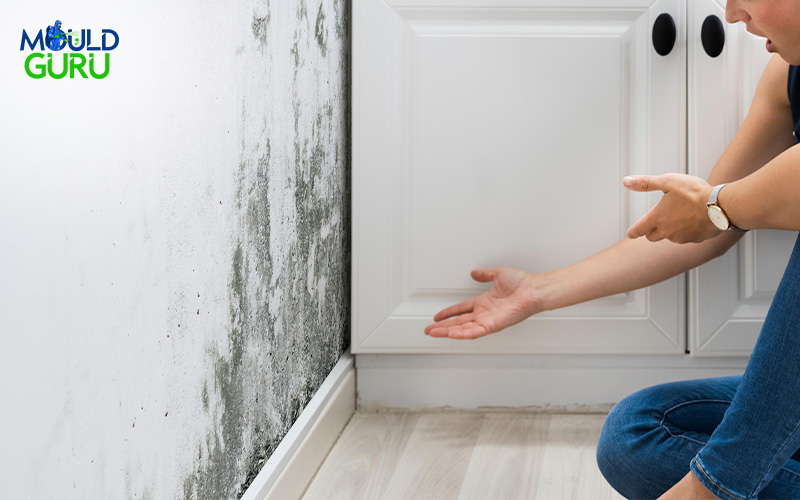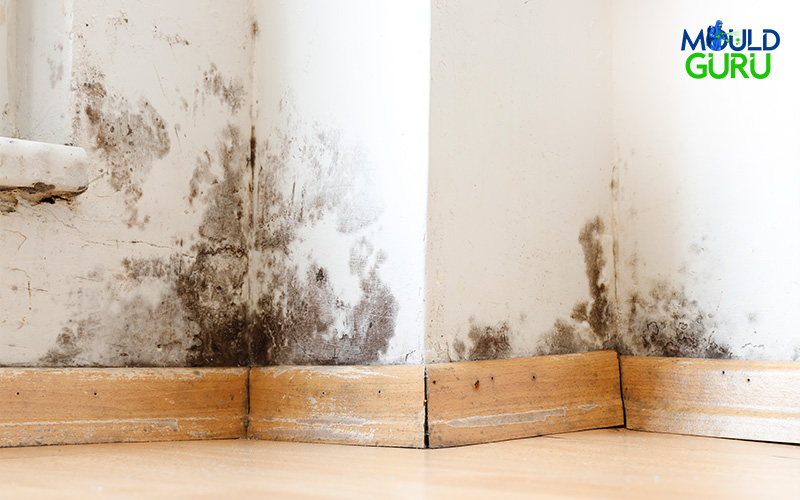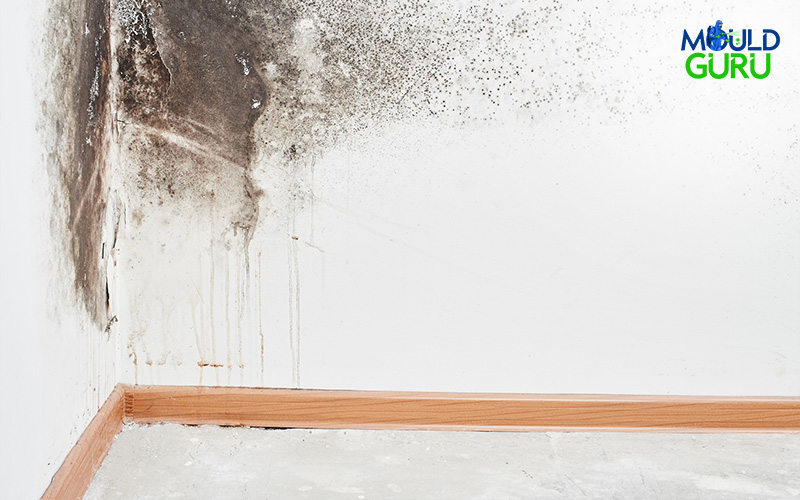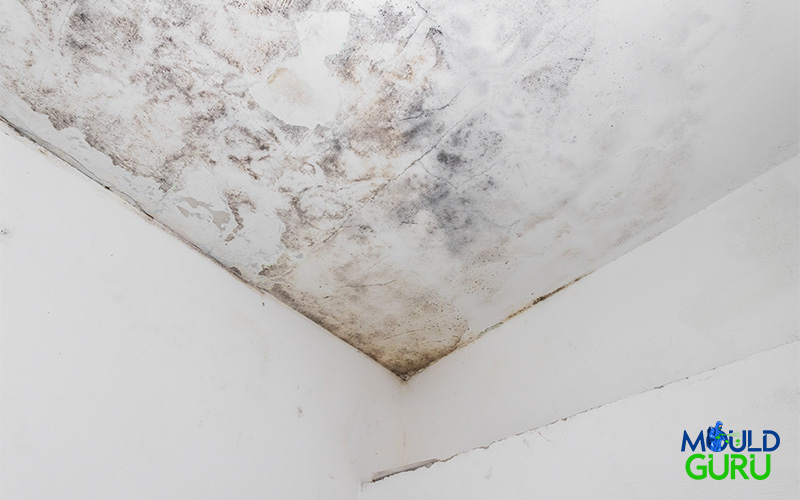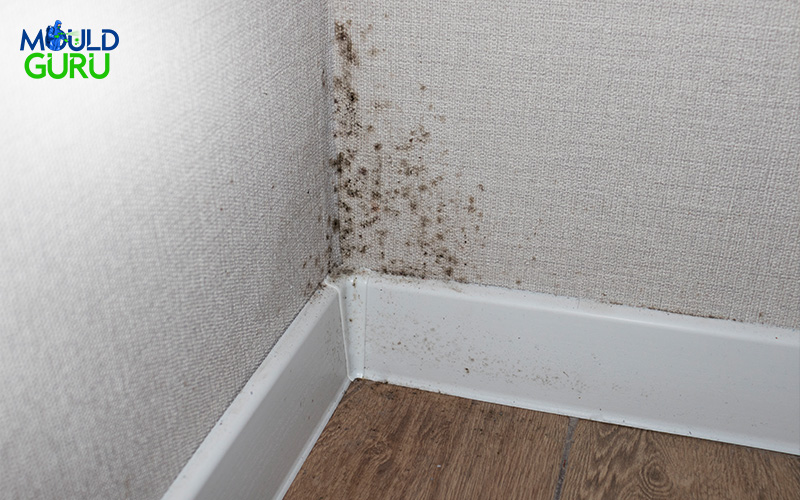
Imagine coming home after a long day, only to be hit by that unmistakable musty smell. You notice dark stains creeping along the corners of your bathroom ceiling or bedroom walls, and perhaps your child’s allergies have been flaring up again for no obvious reason. These aren’t just annoying problems—they’re signs that mould may be quietly invading your space. In Singapore’s tropical climate, mould is more than just an eyesore. It’s a health hazard that can worsen respiratory issues, trigger allergies, and even compromise your home’s structure over time. The worst part? It often keeps coming back even after you’ve cleaned it off.
That’s because mould is a symptom—not the cause. Without addressing the real issues like high humidity, poor ventilation, and hidden leaks, no amount of surface cleaning will stop it. A long-lasting mould-free home requires smart, consistent home maintenance, not just spot cleaning when things look bad.
In this guide, we’ll walk you through everything you need to know to fight mould effectively and prevent it from returning for good. You’ll learn:
- Why mould grows in your home and what causes it
- Where mould tends to hide, including the less obvious places
- The difference between DIY and professional mould removal
- Long-term home maintenance strategies to prevent future mould growth
Whether you’re dealing with a small patch or a recurring infestation, this guide will equip you with the knowledge and steps to take control of your indoor environment.
Why is Mould Growing in Your Home? The Root Causes
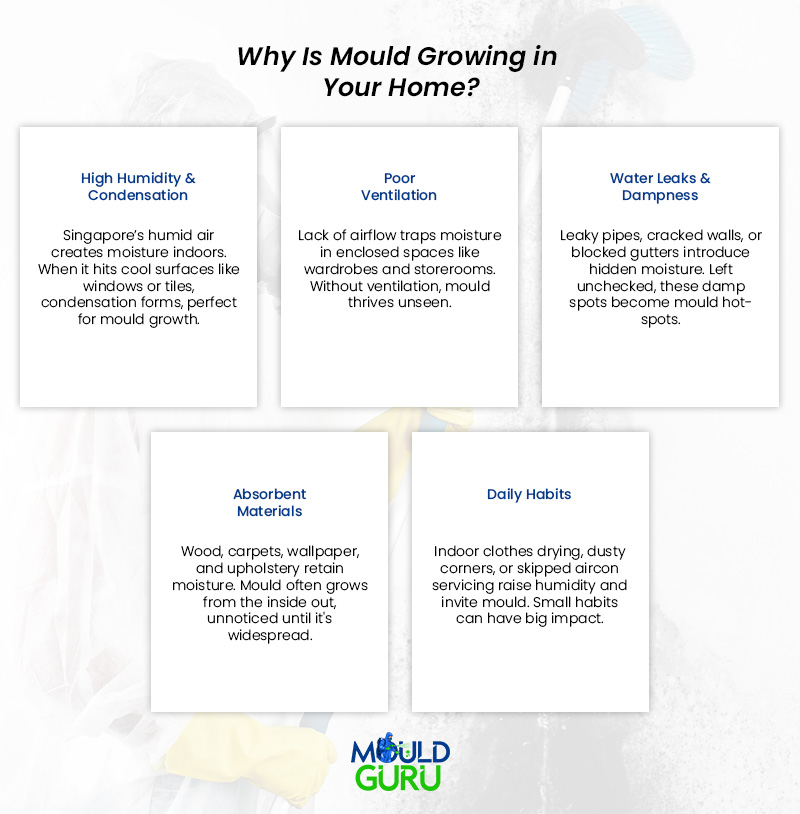
Before we dive into prevention strategies or deep cleaning techniques, let’s first understand why mould keeps showing up in the first place. After all, effective solutions start with identifying the root of the problem. Mould isn’t just a surface-level nuisance—it’s a result of environmental factors and everyday habits that, over time, create the perfect storm for growth.
Here are the main culprits, and how they tie back to essential home maintenance practices.
1. High Humidity and Condensation
Singapore’s hot and humid weather means that indoor air is often loaded with moisture. When this warm, damp air hits a cooler surface—like a windowpane, tile wall, or even a mirror—it condenses into water droplets. These droplets may seem harmless, but over time, they create the perfect damp environment for mould spores to grow and spread. Areas with frequent condensation, like bathrooms, kitchens, and even air-conditioned rooms, are particularly vulnerable.
2. Poor Ventilation
Ever noticed how quickly a room feels stuffy when there’s no air movement? That’s not just uncomfortable—it’s also a mould magnet. Without proper airflow, trapped moisture has nowhere to escape. In small, enclosed spaces like wardrobes, storerooms, and even behind large furniture, stagnant air and trapped humidity create a hidden paradise for mould. Improving ventilation is a key part of smart home maintenance—opening windows, using exhaust fans, or installing air vents can make a world of difference.
3. Water Leaks and Structural Dampness
Leaky pipes, broken roof tiles, cracked walls, and even blocked gutters can introduce water into parts of your home that are hard to monitor. These silent leaks might go unnoticed for weeks or months, but mould spores are quick to take advantage. Once moisture seeps into the walls or ceiling, it doesn’t take long for the mould to follow. Regular inspections and preventive home maintenance help catch these issues before they escalate into full-blown infestations.
4. Absorbent Surfaces
Some materials in your home naturally retain moisture. Wooden cabinets, carpets, wallpaper, and upholstered furniture may soak up humidity and create mould growth from the inside out. The tricky part? You often won’t see the mould until it’s already widespread. This is why regular cleaning, dehumidifying, and rotating furniture play a key role in long-term home maintenance routines.
5. Household Habits That Worsen Mould Growth
Everyday actions like drying clothes indoors, skipping aircon servicing, or letting dust build up in corners can contribute to mould problems. These habits might seem minor, but combined with Singapore’s moist climate, they create the ideal conditions for mould to flourish. Being mindful of your daily routines and adjusting them as part of proactive home maintenance, can help keep your home dry, clean, and mould-free.
The Unexpected Places Mould Hides in Your Home
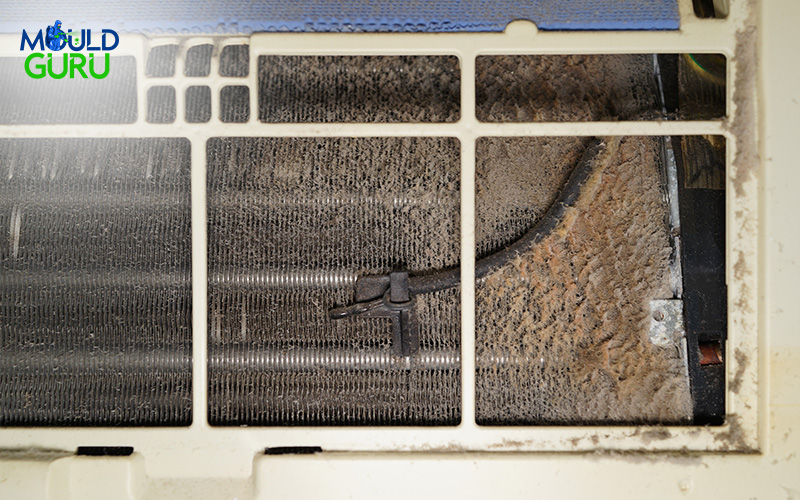
Now that you know what causes mould, it’s time to talk about where it tends to grow—and often, it’s not where you’d expect. Let’s uncover the hidden areas where mould tends to lurk, so you can take proactive steps with regular home maintenance to keep your living space clean and safe.
1. Inside Air Conditioners and Vents
Moisture build-up inside air conditioning units creates the perfect breeding ground for mould spores. Once the spores settle in these damp areas, they can quickly multiply and get circulated throughout your home every time you turn the system on. Regular servicing and mould cleaning should be part of your home maintenance checklist to prevent this silent spread.
2. Behind Walls and Wallpaper
Condensation can collect behind walls and underneath wallpaper, especially in rooms with poor insulation or high humidity. Often, mould here remains hidden until you notice bubbling paint, peeling wallpaper, or a persistent musty odour. By this stage, the infestation may be more serious than you think.
3. Wardrobes and Closets
Poor ventilation and trapped humidity make wardrobes and closets common culprits for hidden mould. Wooden surfaces and fabric clothing easily absorb moisture, especially in homes with fluctuating temperatures. A musty smell is often your first clue. Keeping closet doors ajar occasionally and using dehumidifiers are simple home maintenance habits that go a long way.
4. Under Carpets and Floorboards
Moisture from spills, leaks, or ambient humidity can become trapped under carpets and between floorboards. Since this mould is out of sight, it often goes unnoticed until it starts affecting your indoor air quality or damaging the floor. Lifting and cleaning carpets periodically should be part of your long-term home maintenance routine.
5. Kitchen Cabinets and Refrigerator Seals
Dark, damp areas under the kitchen sink or around refrigerator rubber seals are hotspots for mould. Small leaks or condensation often go unchecked in these spaces, making them ideal for mould to grow. Regularly wiping down and inspecting these areas is a simple but effective preventative measure.
6. Soft Furnishings and Mattresses
Your sofa, curtains, and even your mattress can harbour mould if they’re exposed to constant humidity or not aired out properly. These porous materials soak up moisture and are rarely cleaned deeply. Ensuring proper airflow and sunlight exposure is crucial to keep them dry and mould-free.
7. Ceiling Corners and Attics
Warm air rises and meets cooler surfaces at ceiling corners or in the attic, creating condensation that encourages mould. These areas are often poorly ventilated and easy to overlook. Including attic checks in your seasonal home maintenance schedule can help catch mould before it spreads.
Mould isn’t always easy to spot, but that doesn’t mean it’s not causing harm behind the scenes. Staying vigilant and making these checks a regular part of your home maintenance routine is the best way to keep your space fresh, healthy, and mould-free.
DIY vs Professional Mould Removal: What Really Works?
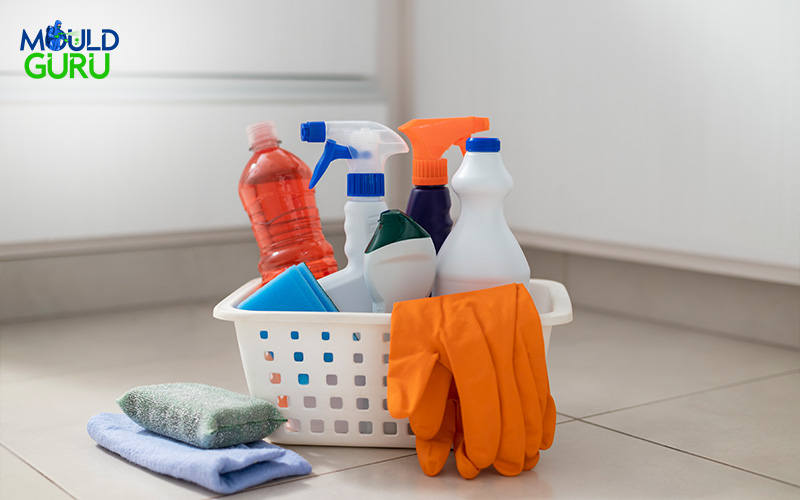
Once you’ve identified mould hotspots in your home, the next step is tackling the problem—but how? Should you handle it yourself or bring in the experts? The answer isn’t always straightforward, especially when the goal is long-term prevention and maintaining good home hygiene.
1. DIY Methods: Are They Effective?
Many homeowners turn to DIY remedies like vinegar, baking soda, or bleach in an effort to eliminate mould. These ingredients can be effective for surface-level removal, particularly on non-porous surfaces such as bathroom tiles or glass. They’re affordable, easy to use, and convenient for quick clean-ups.
2. The Limitations of DIY Removal
However, mould isn’t just a surface problem. It often spreads its roots (called hyphae) into porous materials like wood, fabric, and drywall. That means wiping it off the surface doesn’t always solve the issue. Worse, scrubbing without proper containment can release spores into the air, allowing mould to settle elsewhere in your home. For homeowners trying to handle recurring mould growth, relying solely on DIY solutions may become a frustrating cycle. This is where good home maintenance habits—like routine inspections and early intervention—can help limit the need for more drastic action.
3. When Should You Call a Professional?
If the mould covers more than one square metre, keeps coming back, or appears in areas that are difficult to reach—such as inside air ducts, under flooring, or behind walls—it’s best to call in the professionals. Mould can also pose health risks, especially for individuals with allergies or respiratory issues, so professional mould treatment ensures the problem is handled safely and thoroughly.
4. How Professional Mould Removal Works
Professionals use tools and techniques that go beyond what typical households have access to. These include HEPA vacuuming to capture airborne spores, antimicrobial treatments to kill hidden mould colonies, and industrial-grade dehumidifiers to dry out the environment. More importantly, experts also identify the root cause—whether it’s a hidden leak or structural dampness—and recommend steps to prevent future growth.
5. Cost vs Effectiveness: Is It Worth It?
While the upfront cost of hiring a mould remediation specialist may seem steep, it’s often more cost-effective in the long run. Ignoring or improperly treating mould can lead to extensive property damage and costly repairs, not to mention potential health bills. Investing in professional help, paired with ongoing home maintenance, offers peace of mind and long-term protection for your living space.
Long-Term Solutions: Preventing Mould from Coming Back
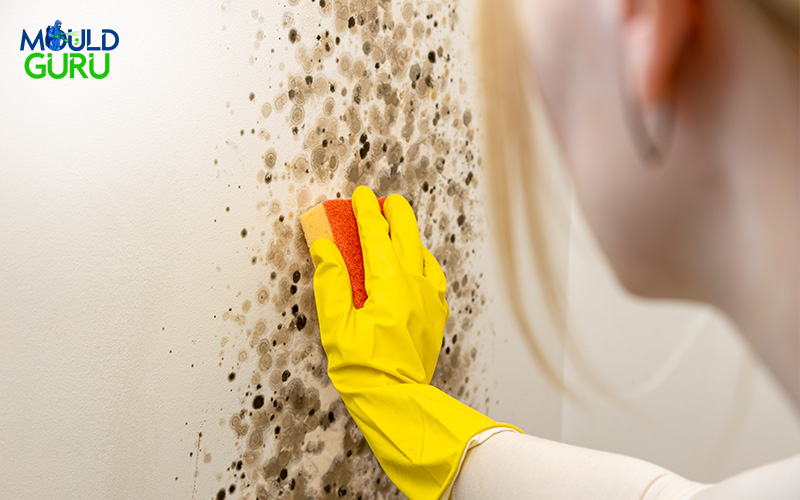
While professional mould removal offers a powerful solution, prevention is still the best approach. After all, keeping mould away starts with creating an environment where it simply can’t thrive. With the right habits and a little foresight, you can protect your home from recurring mould issues and reinforce your home maintenance routine.
1. Control Humidity Levels
Mould loves moisture. That’s why maintaining indoor humidity below 60% is one of the most effective preventive steps. Investing in a reliable dehumidifier can make a big difference, especially in naturally damp areas like basements or bathrooms. Alternatively, smart use of air conditioning—such as running it regularly with clean filters—can help reduce excess moisture in the air.
2. Improve Ventilation
Poor airflow traps moisture and creates ideal conditions for mould. Keep windows open when the weather allows, and make it a habit to use exhaust fans in the kitchen and bathrooms. If certain areas tend to feel stuffy or musty, avoid sealing them off entirely and consider adding a ventilation fan or passive vents to encourage circulation. Good airflow is a cornerstone of proactive home maintenance.
3. Regular Cleaning and Maintenance
Keeping moisture-prone surfaces dry and clean is crucial. Wipe down bathroom walls and kitchen counters after use, check under sinks for slow leaks, and clean out air conditioning filters monthly. Incorporating these habits into your routine isn’t just about tidiness—it’s part of a smart home maintenance plan that stops mould before it takes hold.
4. Anti-Mould Paints and Coatings: Do They Work?
Some wall paints and sealants come with anti-fungal properties that resist mould growth. While they’re not foolproof, they can be helpful in high-humidity areas like bathrooms or laundry rooms. When combined with other preventive efforts, these products offer an added layer of protection.
5. Use Air Purifiers and Moisture Absorbers
HEPA-filter air purifiers can trap airborne mould spores, improving air quality in your home. Moisture absorbers like silica gel or activated charcoal packs are also effective in small, enclosed spaces such as wardrobes, shoe cabinets, or under sinks.
6. Reconsider Home Design Choices
When renovating or upgrading, choose materials that can withstand damp conditions—like moisture-resistant flooring, tiles, or wall panels. Proper insulation and sealing can also prevent condensation buildup, reducing your chances of mould in the long run.
Incorporating these practices into your everyday home maintenance efforts can go a long way in keeping your living space mould-free, fresh, and healthy.
Frequently Asked Questions
1. Can I remove mould myself, or do I always need a professional?
It depends on the extent of the mould problem. For small surface mould, DIY methods like vinegar or baking soda can help, but they don’t always address the root cause. If the mould keeps coming back, has spread to large areas, or is growing in hidden places (like inside walls or air conditioners), professional removal is the best option.
2. How can I tell if mould is affecting my health?
Common symptoms of mould exposure include persistent sneezing, coughing, itchy eyes, and skin irritation. If you or your family members experience worsening allergies, respiratory issues, or unexplained fatigue, mould in your home could be a contributing factor. Individuals with asthma or weakened immune systems are especially vulnerable.
3. How can I prevent mould from coming back after removal?
The key to mould prevention is moisture control. Use dehumidifiers, improve ventilation, and regularly check for leaks. Cleaning air conditioning filters, using anti-mould paint, and placing moisture absorbers in problem areas can also help. Consistently maintaining these habits will reduce the chances of mould returning.
Conclusion: Don’t Let Mould Take Over Your Home
Mould may be silent and sneaky, but it’s not unstoppable. From understanding its root causes to identifying the hidden spots where it thrives, you now have a clearer picture of how mould affects your living space. Whether it’s high humidity, poor ventilation, or overlooked household habits, mould finds a way, unless you stay a step ahead.
And while preventive measures and regular home maintenance are key, sometimes the problem is too persistent or widespread for DIY fixes alone. That’s when you need a professional mould removal service that specialise in identifying, treating, and preventing mould at its source.
So, if you’re dealing with stubborn mould or just want peace of mind that your home is truly safe, it’s time to call in the experts. Mould Guru offers professional mould inspections, removal services, and prevention strategies tailored to your space. Don’t wait for the musty smell or spreading stains. Contact Mould Guru today and take control of your home’s health.

